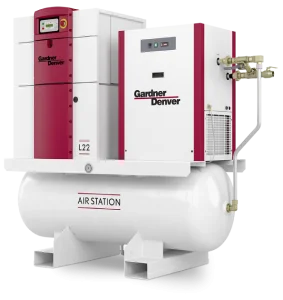
 Do Not Mix Lubricants!!
Do Not Mix Lubricants!!I had a customer call and had a positive displacement blower that needed oil. He said “I have some compressor oil – can I use that in the blower?” I have had others call stating they had a rotary screw compressor using mineral base oil (typically ATF or equivalent), and wondered if he could top-off with synthetic lube. Both are recipes for disaster.
In the first case, positive displacement blowers require a higher viscosity oil than rotary screw compressors. Typically, they will require a viscosity index of ISO 220 oil (40W SAE). Rotary screw compressors will typically require an ISO 46 (for synthetic lubricants). The ISO 46 is much too thin to provide proper lubrication to the gears and bearings of a positive displacement blower. Conversely, the ISO 220 blower oil will be too heavy and thick for use in the rotary screw compressor, starving the maintenance and greater reliability compressor for oil.
In the second example, the two oils are not compatible. The two different base stocks, when combined, can cause detrimental interaction with polymers within the compressor (seals, etc.). If oils are inadvertently mixed, a complete flush and fill procedure should be followed. The contaminated oil must be completely drained from the compressor, filters and separator must be replaced, and the unit partially filled (1/2 charge) with the new lubricant or flushing fluid. The unit must then be run until normal operating temperatures are reached, and then shut down. Oil must again be drained completely from the unit, and oil filter replaced again. The compressor can then be filled with a complete charge of new oil. This procedure is costly and time-consuming and can be avoided by not mixing lubricants.
Compressors and blowers both have very specific lubricant requirements, which are generally spelled out in the operator’s manual furnished with the equipment. Following the manufacturer’s recommendations will help keep your compressor or blower operating satisfactorily for a long time.


